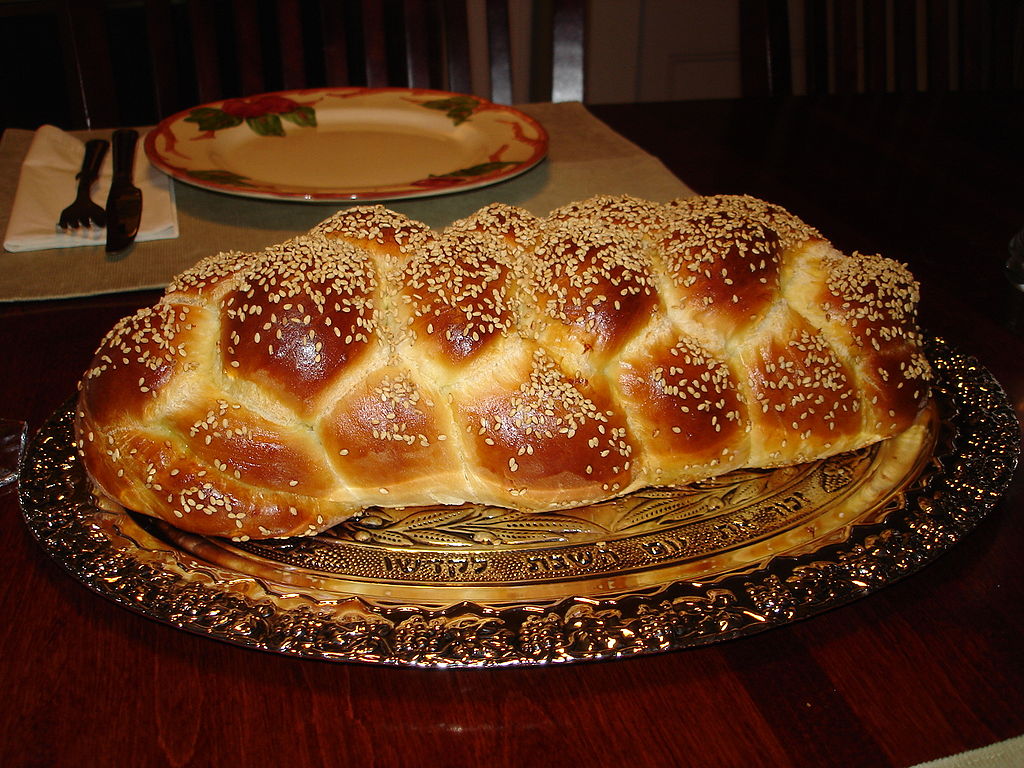Most European cultures seem to have some version of traditional, fluffy white bread. Ashkenazi (Eastern European) Jews, of course, have challah. Although technically challah is a Hebrew word that refers to the portion of bread tithed to priests in the time of the Holy Temple, it has been colloquialized to mean braided white bread that Ashkenazi Jews traditionally serve in honor of Shabbat. There are probably more challah recipes than there are challah bakers, as a great deal of the Ashkenazi women I’ve met have had slightly different recipes stashed away somewhere, but in this world of constant changes, it’s comforting for me to know that my grandmother’s recipe always remains good.
Parve
Yields 5-6 medium-sized challahs, or 2 huge ones. Or you can make lots of small ones and share with friends.
Ingredients:
- 2 packages rapid-rise dry yeast
- Approximately 7 cups all-purpose flour (divided) — you can experiment with other types such as whole-wheat, spelt or gluten-free mix, but at your own risk
- 2 tsp salt
- 1/2 cup sugar
- 1 1/2 cups lukewarm water
- 1/2 cup oil
- 4 eggs (or egg substitute)
- Optional additions: chocolate chips, sun-dried tomatoes with basil and garlic powder, sprinkles, cinnamon-sugar or various seeds for topping…
Combine ingredients in a large mixing bowl, using 1 cup of flour to begin. Stir thoroughly, then add another cup of flour and stir in. Add more flour, a cup at a time, until the dough is very sticky and pulls away from the bowl. Add a half-cup more of flour, then manually gather the dough and smush the flour in (the dough should be too stiff to stir). Begin kneading the dough in the bowl, using the heel of your palm to press down and fold. Add more flour in small amounts to control the stickiness, and stop adding flour when the dough no longer sticks to your hands in clumps (it should still be somewhat sticky).
Turn the dough onto a clean, lightly floured surface and knead for about 10 minutes, until the dough is smooth, elastic and no longer sticky. If the dough is too sticky to knead, add more flour, but add as little as you can while kneading. Lightly oil a bowl, shape the dough into a ball, put it into the bowl, and cover it with plastic wrap. Set the bowl aside in a slightly warm place to rise for 50-60 minutes, until doubled in size.
Punch down the dough to completely deflate it, the again gather it into a ball and let rest for about 5 minutes (covered or uncovered). Line a baking sheet with parchment paper, if you prefer an easier cleanup job, then use your mad skills from JAM challah baking and Challah for Hunger to shape the dough as desired. Cover again with plastic wrap and let rise until doubled in bulk, about 30-40 minutes.
Preheat oven to 350 F. Brush with a solution of egg and water in a 1:1 ratio and bake for 30-40 minutes, depending on size and shape of breads, or until the tops look golden brown and the bottoms sound hollow when tapped (careful of those fingers!). Move to a cooling rack to cool until done.
Modestly accept all compliments on your challah, making sure to point out that you made it from scratch. And who needs a bread machine?

